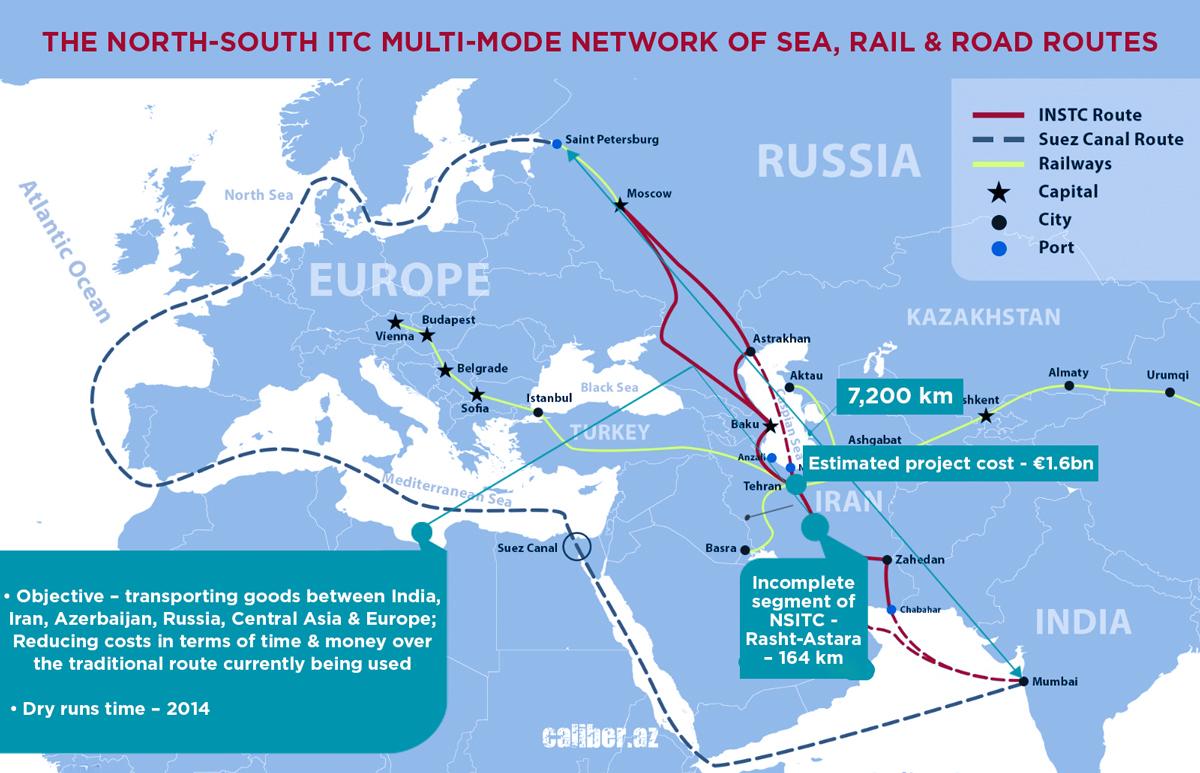North-South corridor: Rasht-Astara segment construction soon to commence Caliber.Az infographic
The North-South International Transport Corridor (NSITC) is a multi-mode network of sea, rail, and road routes with a length of 7,200 km for transporting goods between India, Iran, Azerbaijan, Russia, Central Asia, and Europe.
The objective of the corridor is to increase trade connectivity between major cities, such as Mumbai, Moscow, Tehran, Baku, Bandar Abbas, Astrakhan, Bandar Anzali, etc.
Road tests of two routes were conducted in 2014, the first was Mumbai to Baku via Bandar Abbas and the second was Mumbai to Astrakhan (Russia) via Bandar Abbas, Tehran, and Bandar Anzali. The trial runs aimed to identify and address key congestions. The outcome proved that transport costs were cut by "$2,500 per 15 tons of cargo".
The missing 164-km-long segment of the Rasht-Astara track is a vital part of the regional connectivity solutions. Once finished, the Rasht-Astara railway will reduce the time needed to transport cargo from Helsinki in Finland via Russia to Iran’s southern ports on the Persian Gulf and the Sea of Oman by 20 days.
The North-South Corridor, spanning 7,200km from India to Russia, comprises a multi-mode mix of rail, road, and sea transport routes, optimizing intercontinental trade among participating states and other stakeholders.
This corridor connects Europe, the countries of the Persian Gulf, and the Indian Ocean. Both the Western and Eastern routes of the corridor pass through Iran, with the Western route also traversing Azerbaijan, while the Eastern route extends through Kazakhstan and Turkmenistan. Furthermore, it is expected to facilitate direct sea transportation from Russia via the Caspian Sea to Iran.
The North-South Corridor will offer a direct transport route between St Petersburg and Mumbai. This means Azerbaijan and Iran bridging two continents - Europe and Asia. In other words, the Astara-Astara section - a rail link between Astara in Iran and Astara in Azerbaijan - will play a vital role in linking North and South by land and developing relations between individual countries and continents. It will strengthen trade, transport, and economic relations between the countries of the Middle East, Southeast Asia, Northern Europe, and Russia.
The North-South ITC multi-mode network of sea, rail, and road routes
NSITC length - 7,200 km
Objective – transporting goods between India, Iran, Azerbaijan, Russia, Central Asia & Europe; Reducing costs in terms of time & money over the traditional route currently being used
Dry runs time – 2014
Incomplete segment of NSITC - Rasht-Astara – 164 km
Estimated project cost - €1.6bn









